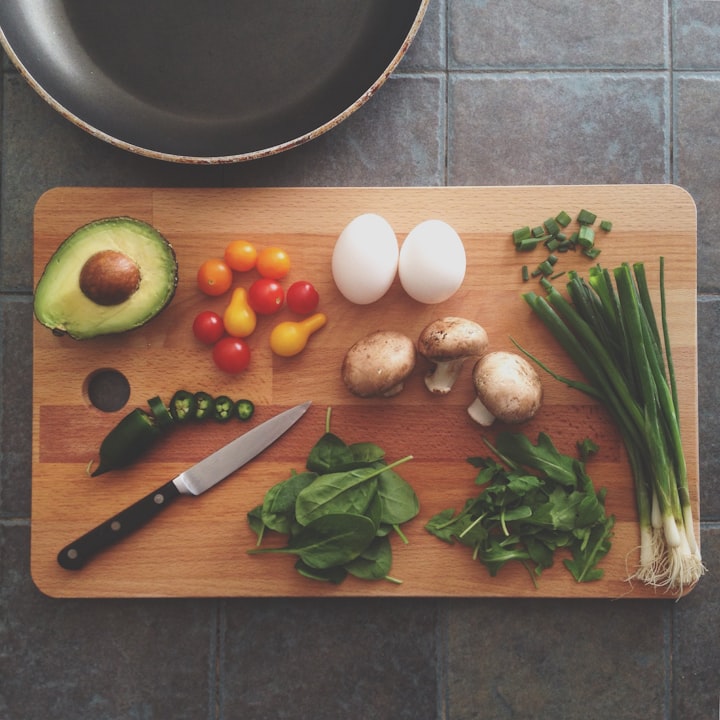
Food-centric cooking shows are a staple in television - whether you're watching to learn a new way to make meals more interesting, or crave the excitement of competition, the allure of an expertly crafted dish is so satisfying to watch. And yet, when translating those moments from television, we're often hearing words that may seem foreign, which is not a surprise when French cuisine and our benchmark for the iconic dining guide originated in France.
When bringing the kitchen from the world of television and beautifully curated cookbooks into our home kitchens, learning a few basic French culinary techniques can help to save time and bring more enjoyment into meal preparation.
Whatever your skill level, this short-list will provide you with the tools to master your journey in the culinary world.
Au Jus
You may recall opening up a menu at a fancy restaurant and reading the individual descriptions, only to stumble upon a word that could make a difference in you enjoying the meal. You often see jus or au jus in meals containing meat, this is because jus or juices, naturally occurring from cooking is a delicious way to enhance the flavour of a meat dish.
Some examples of meals with au jus are: French dips and chicken or prime rib (served with a thin gravy, au jus, of course).
Flambé
The word flambé may not be an unfamiliar word, a technique that means to introduce a flame, particularly when alcohol is used either for preparation or for presentation. The food is doused with a liquor or liqueur, and lit afire to the amazement of everyone involved. Dishes such as baked Alaska are a delicious way to impress your guests with your culinary expertise.
However, desserts are not the only items where you would use flambé, alcohol can be an interesting addition to meat and seafood as a flavour enhancer.
Do note that exercising extreme caution is so important when cooking with the flambé technique, setting anything afire is both exciting and dangerous if not handled within a controlled environment, so safety is definitely key!
Mise en place
"A place for everything, and everything in its place", is such a well-loved expression that so perfectly describes the purpose of mise en place. Directly translated from French, this term means "putting in place", and is often seen in cooking shows when everything is organized both before and after cooking.
At first glance, the lesson of mise en place can seem unnecessary, particularly when you're rushing about to complete your next task, however, the process of organizing and preparing steps allows you to focus on cooking instead of scrambling to find ingredients or utensils, which saves time in the long run.
It's so easy to get wrapped in your next culinary adventure and forget the dishes, or whip through all the bowls and utensils, whirlwind through ingredients, and run out of counter space. With pasta on the walls and flour on your face, it's no wonder that keeping things tidy and organized in the kitchen is a true skill. For those who are best at mise en place, you will find they have a sense of calm under pressure as they take control of their kitchen. They are masters of the chaos and like to spend their time reading the recipe throughly, preparing all the ingredients (washing and chopping vegetables, opening cans, boiling water), and ensuring all preparatory work is complete before the cooking process begins. Having an understanding of all requirements for the meal means the waiting time between certain phases of the cooking process are eliminated, with active efforts to creatively organize and prepare in advance of the next step in the recipe.
Papillote
The term papillote literally translates to "in paper" and refers to the technique of cooking food in a wrapper like parchment or tin foil. It's a very simple way of cooking fish and meats, which requires a defined seal to keep the steam and moisture within the paper pouch.
Although the technique itself is simple in theory, where the use of cooking en papillote is a mark of culinary expertise, comes from the careful and calculated folds required to get the perfect seal, as well as the right combination of ingredients to add moisture to the meal. As the purpose of wrapping everything in paper is to have all ingredients marinate and cook in their own juices to maximize their flavour potential, it's no surprise that steaming your meal, where you're unable to peek in on the progress, takes a level of confidence in culinary ability.
Other examples of en papillote can be seen in other cultures, where this simple cooking method uses natural wrappers like leaves or husks to enclose delicious morsels. Tamales is a great example of how a long-held cooking method still persists today when it comes to traditional favourites.
Quenelle
An eloquent word that starts with a "Q", quenelle is the technique of shaping soft food into a smooth rugby-like ball. It's a fun word to say, and often has you reminisce of ice cream and sorbets. On cooking shows, it represents a deft hand, creative plating skills, and provides your dishes with a sophisticated chef's touch.
In your personal kitchen, the elegant quenelle brings the elegance of fine dining to your home. It's all a matter of trial and error, from finding the right spoon to ensuring the proper temperature before having a perfectly quenelled scoop. What better way to enjoy extra ice cream than to consume the scoops that aren't yet perfected.
Chiffonade
Chiffonade is a knife skill that refers to shredding or finely chopping vegetables and herbs into very fine ribbons. What makes the technique of chiffonade so unique is in the necessity to have the ingredients in very thin, uniform strips, primarily to garnish or support a dish in need of leafy greens or fragrant herbs.
To create the even slices, this technique works best when keeping the knife point at a low angle above a tightly rolled or folded stack of leaves - basil would be a very commonly prepared herb using the chiffonade cut.
Some recipes with the chiffonade technique would include this simple salad to give you plenty of practice with making edible lace.
Roux
The infamous roux provides the basis for many sauces and gravies, as a thickening agent made of equal parts (by weight) of fat and flour, this long-held culinary technique is an important foundation to your meal mastery.
The initial steps in making a roux require flour to be whisked into hot fat - pan drippings from your just cooked meat or bacon fat - then cooked to remove the raw flour taste.
When watching cooking shows, the roux can often feel like an after thought to a very thin soup or a sauce that hasn't quite thickened as expected. However, with the proper preparation, and understanding of what you're looking to achieve, the right type of roux can really elevate your culinary masterpiece.
A roux can be light, brown, or dark, with the main difference being the amount of time it's cooked, and for which dish you're looking to thicken, flavour, or colour.
Sous Vide
Sous vide literally translates to "under vaccum" and is the art of cooking food at a sustained temperature in a vacuum-sealed container. It's a cooking method that has seen popularity in home kitchens in recent years, and have also made owning an immersion circulator much more affordable.
When cooking sous vide, it's easy to think of only steaks and other cuts of meat that may be notorious for being difficult to keep tender, however there are other ways to use this low-temperature cooking technique for eggs, carrots and even cocktails.
Bouquet Garni
Bouquet garni is a collection of herbs tied together to infuse flavours into a slow cooked dish.
The bouquet not only refers to the flavour profile, but the overall harmony that herbs like thyme, parsley and bay leaf bring to a dish. Other herbs such as rosemary or cloves can be added to the holy trinity, simply by tying the herbs in a bundle with cooking twine, or creating a sachet with cheesecloth.
Occasionally you may see this cooking technique on television when building layers of flavour into a soup, but when working under pressure, it may be easier for a chef to opt for more quickly prepared recipes. The main benefit to a bouquet garni, aside from it's preparation for flavour infusion, is the ease of keeping all inedible parts out of the plated meal (and for end of meal cleanup). Bay leaves, have given all their love into your dish, so definitely taste much better when they're kept off your plate.
Sauté
A cooking method we don't often think of as being novel is the method of sautéing. The definition of sauté literally means "to jump" in French, and is the same cooking method used with so many different kinds of food from fish to vegetables to meat to noodles.
Browning your food helps to caramelize the exterior of your food and bring more flavour to your dish, as the heat used to cook the food comes directly from the pan itself.
Do note that the method of sautéing has changed with the invention of non-stick cookware, such that stirring the food in the pan or flipping it with tongs, creates the beloved sauté effect.
With this often used technique, a good way to practice is with vegetables that may require some cooking to truly enjoy. Best of all, this simple technique makes cooking dinner a breeze, as sautéing is quick to learn and is not only the most versatile, but one of the quickest cooking methods around.
About the Creator
Karen Lam
An easily amused writer, paper notebook loving tea aficionado, and facial expressionist extraordinaire. Writer of life, lessons, poetry, culture and leadership.






Comments
There are no comments for this story
Be the first to respond and start the conversation.